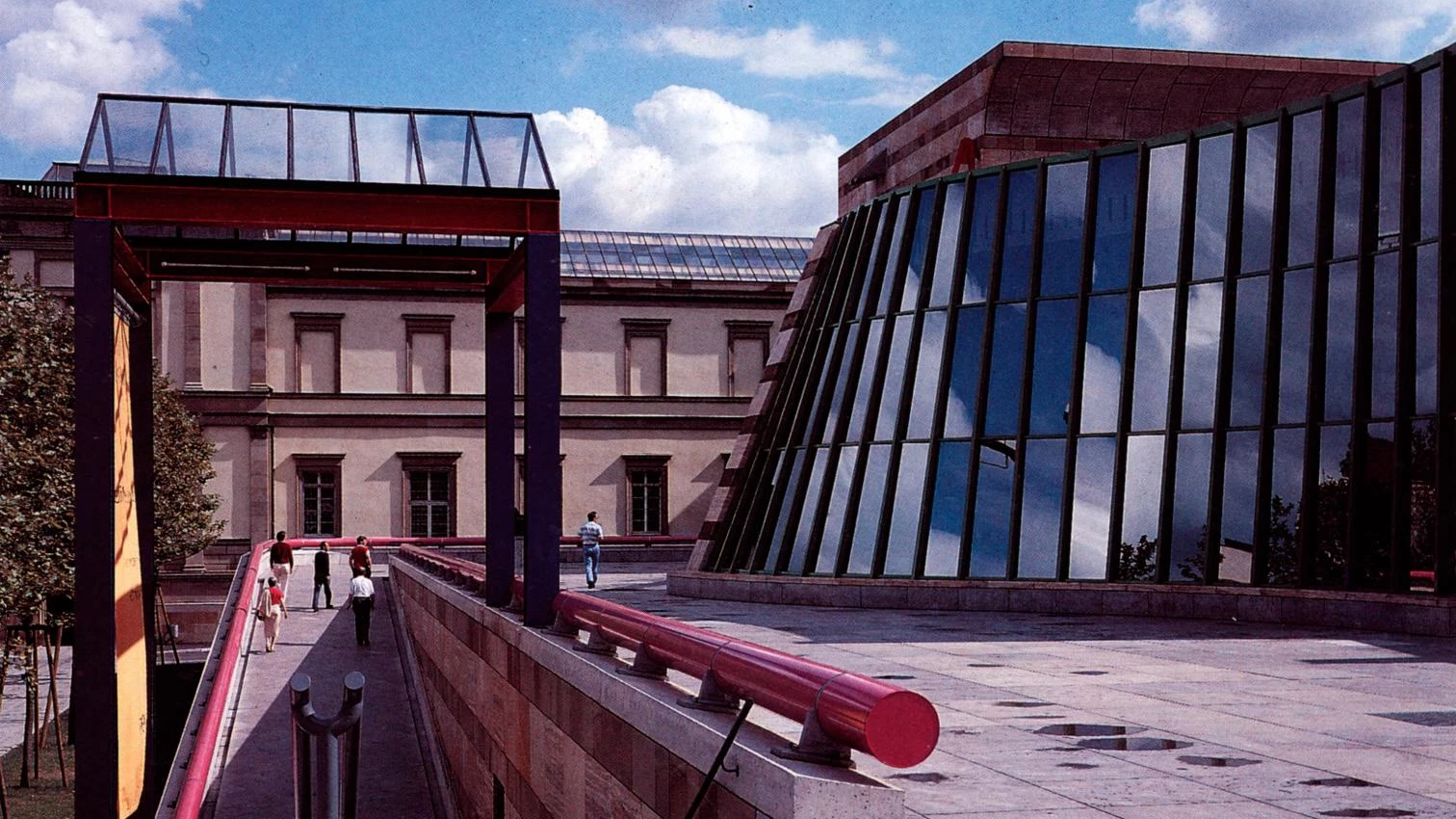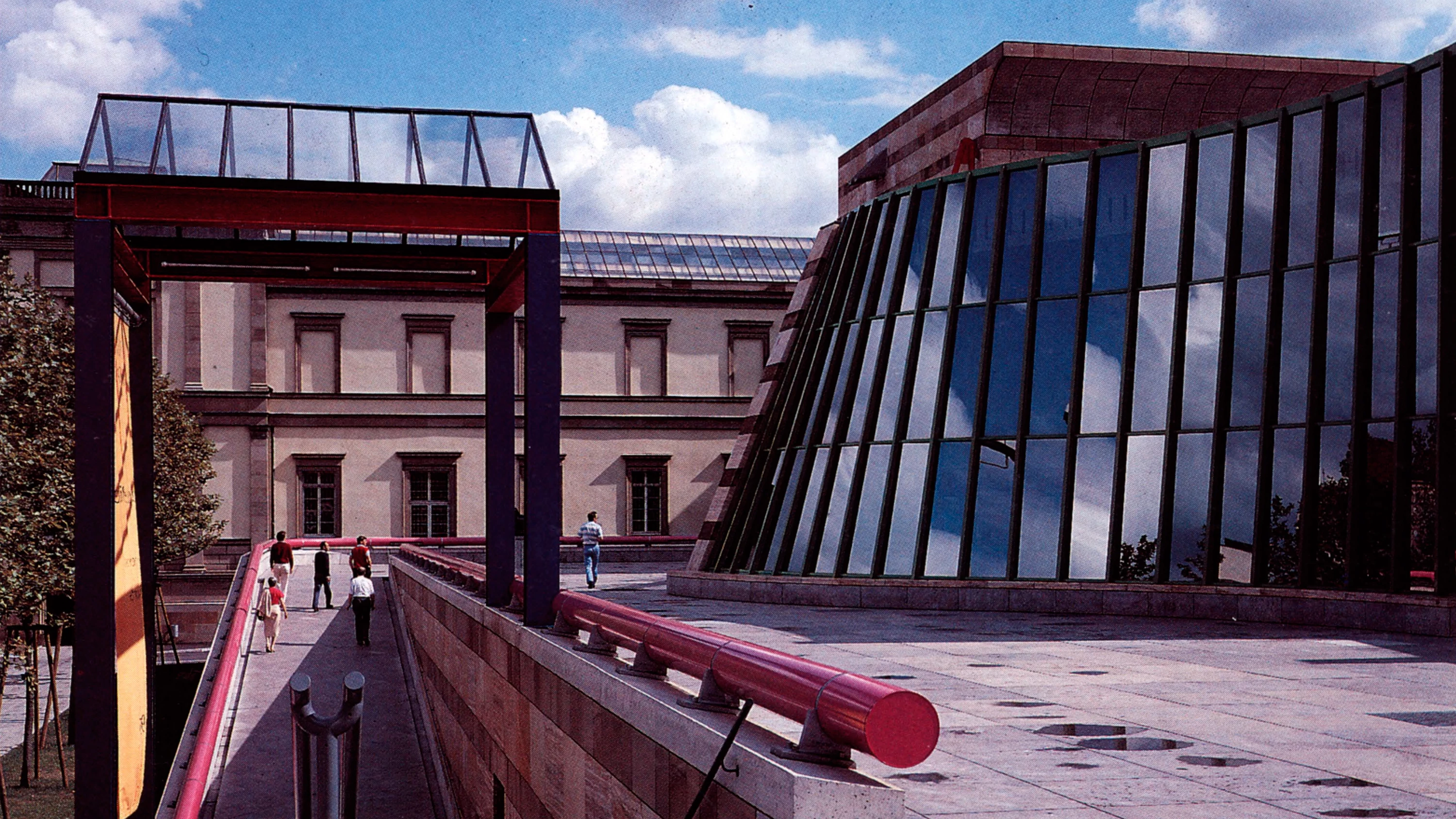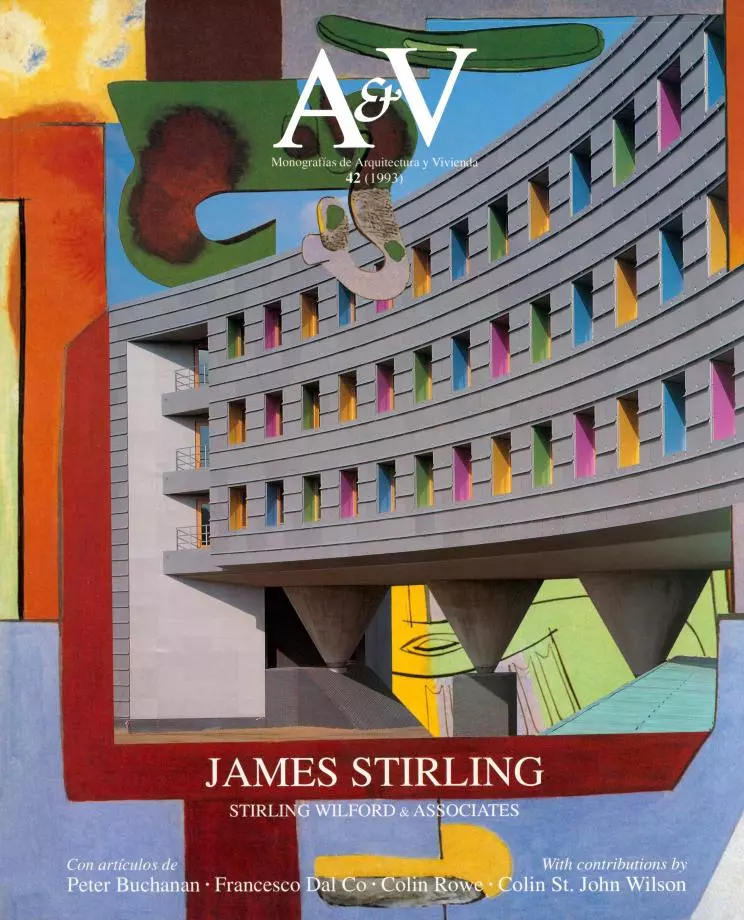Big Jim’s Legacy
From Brutalism to Neo-Rationalism

From Brutalism to Neo-Rationalism, and passing through High-Tech, Contextualism and Postmodernism, James Stirling’s influence on recent architectural history is an indisputable fact. Peter Buchanan points out these influences to us in a run-through of his lifework, beginning at the Fifties with the austere dwellings of Ham Common - a provocation for a then cosy, smug England - and ending with his last built work, the highly complex Braun factory at Melsungen, Germany, which comes across as a masterful last statement.
With the death of James Stirling, architecture has lost a giant in more than the obvious physical sense. He was one of those few great artists, like Le Corbusier and Picasso, whose career went through several distinct phases as periodically he recreated his whole approach afresh. And he was the only architect to come on the scene after World War II to achieve anything like the influence of Le Corbusier and Mies van der Rohe. Looking back on his whole career today, we can only marvel at how influential he was. That influence remains pervasive, often in types of architecture like the now ubiquitous and kitsch Neo-Vernacular, which we now forget he initiated. Brutalism, High-Tech, Contextualism and Post-Modernism were all also shaped in some degree by Stirling’s example. And some of his earliest projects, such as the Honan Competition of 1950 and the Stiff Dom-Ino housing of 1951, anticipate later work by such latter-day Structural Rationalists as Arup Associates and Otto Steidle, respectively…[+]






